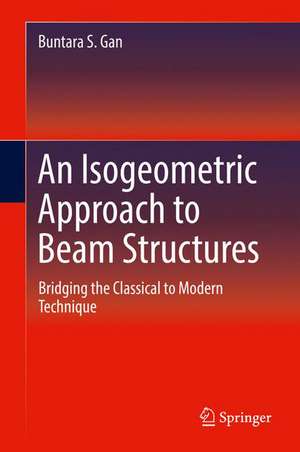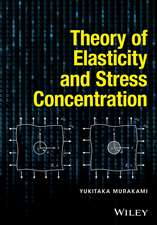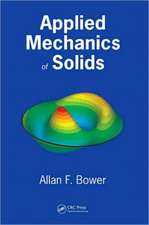An Isogeometric Approach to Beam Structures: Bridging the Classical to Modern Technique
Autor Buntara S. Ganen Limba Engleză Hardback – 13 iun 2017
| Toate formatele și edițiile | Preț | Express |
|---|---|---|
| Paperback (1) | 729.36 lei 38-45 zile | |
| Springer International Publishing – aug 2018 | 729.36 lei 38-45 zile | |
| Hardback (1) | 895.09 lei 3-5 săpt. | |
| Springer International Publishing – 13 iun 2017 | 895.09 lei 3-5 săpt. |
Preț: 895.09 lei
Preț vechi: 1091.58 lei
-18% Nou
Puncte Express: 1343
Preț estimativ în valută:
171.28€ • 183.15$ • 142.81£
171.28€ • 183.15$ • 142.81£
Carte disponibilă
Livrare economică 28 martie-11 aprilie
Preluare comenzi: 021 569.72.76
Specificații
ISBN-13: 9783319564920
ISBN-10: 3319564927
Pagini: 233
Ilustrații: XIV, 233 p. 65 illus., 44 illus. in color.
Dimensiuni: 155 x 235 mm
Greutate: 0.56 kg
Ediția:1st ed. 2018
Editura: Springer International Publishing
Colecția Springer
Locul publicării:Cham, Switzerland
ISBN-10: 3319564927
Pagini: 233
Ilustrații: XIV, 233 p. 65 illus., 44 illus. in color.
Dimensiuni: 155 x 235 mm
Greutate: 0.56 kg
Ediția:1st ed. 2018
Editura: Springer International Publishing
Colecția Springer
Locul publicării:Cham, Switzerland
Cuprins
1. Representation of curves on a plane
2. Numerical Integration
3. Finite Element Formulation of Beam Elements
4. Isogeometric approach to beam element
5. Condensation Method
6. Straight beam element examples
7. Circular curved beam element examples
8. General curved beam element examples
9. Free curved beam element examples
Appendix A : Straight beam element matrices
Index
Notă biografică
Professor Buntara S. Gan is Professor in the Department of Architecture, College of Engineering, Nihon University, Japan.
Textul de pe ultima copertă
This book proposes a novel, original condensation method to beam formulation based on the isogeometric approach to reducing the degrees of freedom to conventional two-node beam elements. In this volume, the author defines the Buntara Condensation Formulation: a unique formulation in condensing the dynamic equilibrium equation for beam structures, suitable for reducing the number of unlimited dynamic equations necessary to yield a classic two-node beam element. Professor Buntara’s method overcomes the problem of the isogeometric approach where the number of degrees of freedom is increased along with the complexity of the geometrical beam element and facilitates implementation of the codes into the existing beam structures programs, and CAD geometrical data into the conventional FE beam element codes. The book proposes a new reduction method where the beam element can be treated as under the conventional beam element theory that has only two nodes at both ends.
•Adopts a progressive and rigorous presentation of topics to facilitate use by students and professionals;
•Presents a new reduction method in which the beam element can be treated as a conventional beam element with only two nodes at both ends;
•Allows computation of the exact solutions of beam theories based on a newly introduced condensation method, not approximation theory;
•Features relevant Matlab codes.
Caracteristici
Adopts a progressive and rigorous presentation of topics to facilitate use by students and professionals
Presents a new reduction method in which the beam element can be treated as a conventional beam element with only two nodes at both ends
Allows computation of the exact solutions of beam theories based on a newly introduced condensation method, not approximation theory
Features relevant Matlab codes
Includes supplementary material: sn.pub/extras
Presents a new reduction method in which the beam element can be treated as a conventional beam element with only two nodes at both ends
Allows computation of the exact solutions of beam theories based on a newly introduced condensation method, not approximation theory
Features relevant Matlab codes
Includes supplementary material: sn.pub/extras








